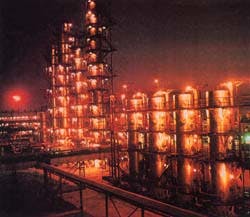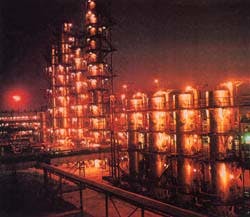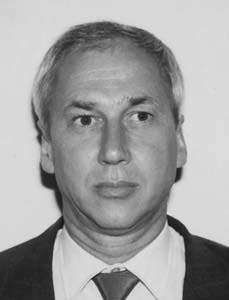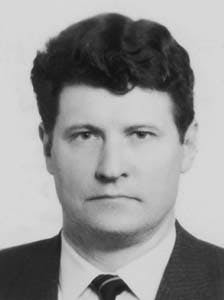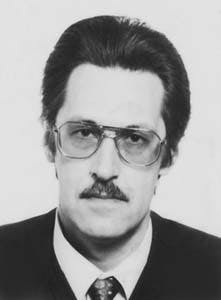Valeri S. Plotnikov, Gabriel F. Avgerinos
Poten & Partners Inc.
New York
Nikita L. Dvorets
Russian Association of Oil & Gas Producers
Moscow
Vladimir M. Tyukov
Rosneft
Moscow
A revamp project at the 28 million ton/year Omsknefteorgsintez refinery in Siberia will add an alkylation unit and a complex that includes vacuum distillation, hydrotreating, catalytic cracking, and visbreaking capacity.
The Russian refining industry appears ready for a comeback but needs investment from abroad. After 7 years of annual decline, output of petroleum products in the former Soviet Union (FSU), most of it from Russian refineries, is estimated to have dropped marginally last year. And an increase is possible this year.
In 1994, Russia's refineries, which account for two thirds of total FSU distillation capacity, yielded 176.2 million metric tons of oil products, compared with 214.1 million tons in 1993 (Tables 1 [18481 bytes] and 2 [75714 bytes]).
Despite the precipitous decline in refinery production, net FSU exports of refined products were down only 5% in 1994 at about 51.3 million tons. This occurred despite the decline in refinery production because of sizable contraction in oil consumption in Russia and the other republics.
The industry now
The FSU's dilapidated energy infrastructure needs substantial repairs. Its problems, from leaky pipelines to inefficient refineries, will remain a long-term drag on the industry.
But for Russia's nascent market economy, the industry's stabilization shows capitalist forces at work. In the past year, the government has grudgingly liberalized oil markets by deregulating domestic oil and motor fuel prices and abolishing export quotas. As a result, it's now profitable for domestic refineries to sell their products in Russia.
Apparent consumption of oil products in the FSU in 1994 was around 206.5 million tons, a decline of 20% from 1993. In Russia, the decline was 21%, to 136.2 million tons. However, Russian monthly consumption of gasoline stabilized during the year instead of falling month on month as had been the case since 1990. Annual consumption was up by slightly more than 2%-by 3.5 million tons more than production-according to the Commonwealth of Independent States statistical service.
Russia reports that it exported 41.5 million tons of refined products in 1994, 4% less than in 1993.
Refining capacity
There are 48 refineries in the FSU, with total distillation capacity of 499 million tons/year.
The refineries run the gamut from very small plants with less than 20,000 b/d of distillation capacity to complexes with more than 500,000 b/d of capacity. Most of the refineries, regardless of size, are old and have limited upgrading capability.
Western observers have argued that the industry should be rationalized with old and inefficient plants closed. This would be very difficult due to the nature of the pipeline system and because each refinery serves a particular region.
It is also true that nearly all primary capacity is old and inefficient, and it is hard to see how savings could be made from rationalization. At all companies, located in either Russia or elsewhere in the FSU, there are three directions for future investments:
- The need for modern equipment and technology.
- Improvement of the environment and reduction of air pollution.
- The need to add upgrading units to oil refineries.
This will allow for new products as well as increase the share of more valuable light products. Currently, mazut (heavy fuel oil) accounts for about 37% of the product slate of the FSU. In FSU nomenclature, "depth of processing"-the share of the product slate other than mazut-is 63%.
Data published by Poten & Partners indicate that total operational capacity of Russia's refineries fell from 345 million tons/year in 1993, of which an average of 62% was utilized during the year, to 327.8 million tons/year in 1994, when the utilization rate was 53.8%.
Geographic distribution of refining capacity differs from that of oil production in Russia. West Siberia is by far the largest oil producing region, accounting for 70% of the Russian total, followed by the Urals 14% and the Volga region 12%.
Refining capacity is distributed more evenly. The Volga region leads with 25%, closely followed by the Urals 23%, the Central Region 14%, East Siberia 12%, West Siberia 9%, and the North Caucasus 8%.
Capacity utilization rates for Russia fell in 1994 to 55% for distillation capacity, 59% for catalytic cracking, 41% for lubricants production, and 51-52% for hydrofining, catalytic reforming, and other fuel enrichment processes.
Refinery throughput
In 1995, Russia's refinery runs were up by 0.1% to an estimated 176.3 million tons (Table 3 [12367 bytes]). A number of figures are being reported for Russian throughput, ranging from 175.5 million tons by the Ministry of Fuel and Energy to 180 million tons by Roskomstat.
In 1995, Russia produced 63.1 million tons of fuel oil, which accounted for about 15% of all electricity generation and is a major fuel of district heating centers.
Most fuel oil has a sulfur content of 2.5-3.5%. The absence of flue-gas scrubbers at power stations and of desulfurization equipment at refineries means that the burning of fuel oil creates high levels of pollution in many regions.
For the FSU as a whole, refinery throughput declined by 17% in 1994 to 245.5 million tons. Refinery runs were down in all the republics except Turkmenistan, where throughput was up 6%. The largest decline was registered in Lithuania-28%.
Secondary processing
The Soviet Union left a large and widely distributed refining industry for the republics.
Soviet refineries contain three basic types of crude oil distillation units. They range from early design shell stills, through one stage atmospheric pipe stills, to current technology, two stage atmospheric-vacuum pipe stills.
Some of the one and two stage units contain their own distillation section, and some are built in combination with other types of units. The standard crude oil distillation units have a design capacity of 120,000 b/d.
Secondary processing in Russia suffers from enormous problems. New equipment is lacking. And technology and use of existing secondary processing capacity fall well short of modern standards (Table 4 [16202 bytes]).
Data published by the Russian Scientific Research Institute of Oil Refining (Moscow) indicate that the Russians are reevaluating their secondary processing capacity.
Given an effective primary capacity of 300 million tons/year, the new data suggest that Russia has 26.1 million tons/year of catalytic reforming capacity-compared with earlier estimates of 33.6 million tons/year. Catalytic cracking capacity, according to the new data, totals 12.3 million tons/year, compared with earlier estimates of 16.7 million tons/year.
Other capacities are thermal cracking 9.6 million tons/year (20.9 million tons/year earlier, some very old and mothballed), hydrocracking 600,000 tons/year (2.4 million tons/year earlier), and no isomerization.
The lack of adequate heavy oil conversion capacity leads to a surplus of fuel oil and makes it difficult for refineries to produce high octane gasoline and high grade diesel fuel in the increasing volumes needed to meet domestic demand. Currently, about three fourths of gasoline is grade A-76, which has such poor characteristics that it is not produced anywhere else in the world.
The production of high sulfur diesel (0.2-0.5% sulfur) accounted for 40% of total output. Russia produced 63.1 million tons of fuel oil in 1995. Most of it has sulfur content of 2-3.5%.
For 1996, the Ministry of Fuel and Energy forecast called for a refinery throughput of 180 million tons (Table 5 [15626 bytes]).
The export profitability of refined products became negative for most Russian refineries, as rail tariff rates have risen rapidly and crude oil prices have also been going up. In July 1995, railroad tariffs were reduced substantially under Decree 706 so as to make export "profitable" again. Nonetheless, refined product exports can be expected to fall in the future.
Production, consumption
The decline in output from Russia's refineries is over.
Poten & Partners expects that the decline in consumption of oil products will prove to have ended in 1994. Consumption could climb to about 187 million tons/year by 2020 from an estimated 147.1 million tons in 1995 if capital becomes available for required investments (Fig. 1 [39386 bytes]). It is in Russia's interest to attract investment from western energy companies, but progress probably will not be consistent or rapid.
During 1993 and 1994, about $1.5 billion was spent on the refining sector. Industrial construction was difficult due to the financial instability and nonpayments crisis affecting the whole of Russian industry.
However, a number of important facilities were completed, including a 750,000 million ton/year bitumen unit at Moscow Plant, a sulfuric acid plant at Ryazan, a lubricant selectofiner at Novokuybyshevsk, a plant for vacuum distillation of fuel oil at Yaroslavl, a diesel hydrofiner at the Norsi refinery at Nizhniy Novgorod, a 400,000 ton/year minirefinery that became operational at Al'metyevsk, and cat crackers at Ufa and Omsk.
Work continued on a hydrocracker at Yaroslavl, primary refining plants at Samara, a hydrofiner at Orsk, and a coker at Achinsk.
Plans exist to build several refineries in Russia. Some of these are quite small and specialized, such as a 3 million ton/year unit at Nizhnevartovsk in Tyumen Oblast and a 4 million ton/year refinery near the city of Tyumen. Both plants will emphasize production of motor fuels.
Lukoil plans to build refineries at Krasnodar Kray near the Black Sea and at Kogalym in West Siberia. All of these plants will be capable of relatively deep processing, with the Lukoil plant planned to depth of processing of 85%.
There are even more projects to upgrade existing refineries. These include expansions and revamps at Krasnodar, Kirishi, Yaroslavl, Novokuybyshevsk, Achinsk, and Orsk and projects to increase LPG production at the Syzran, Saratov, and Volgograd refineries.
The Ministry of Fuel and Energy plans to raise the depth of refining from the 63% achieved in 1995 to 73-75% within 5 years and 82-84% by 2010. Although the ministry would like to see investment in the Russian engineering industry so that Russia can produce the necessary equipment itself, it is conceded that most equipment will be imported from the West and paid for from revenues from exported oil products.
The ministry reports that the program for reconstruction and modernization of oil refineries during 1995-2000 will cost $7 billion and anticipates throughput of 210 million tons in 2000. Domestic demand is projected at 29 million tons/year of gasoline, 43 million tons/year of diesel fuel, and 15 million tons/year of jet fuel. A further 19 million tons/year of motor fuel and 8 million tons/year of fuel oil will be needed for export to pay with hard currency for western technology and equipment.
Investment opportunities
The republics of the FSU-in particular Russia, Kazakhstan, Turkmenistan, and Uzbekistan-urgently need foreign investment in their refining industries, as well as production, gas processing, transportation, distribution, export facilities, and related industries, particularly petrochemicals.
Specific needs vary by republic and region. The needs also span the gamut from short term investments, covered by service contracts and credit lines, to long term investments involving joint ventures, production sharing agreements, and concessions.
Opportunities in Russia
Krasnodarnefteorgsintez. Russia's Fuel and Energy Ministry has supported a project to maximize capacity utilization by Krasnodarnefteorgsintez, which operates the Krasnodar and Afipskiy refineries. The first phase, projected to cost about $15 million, would permit throughput to rise to capacity of 3.4 million tons/year. In 1994 throughput was about 40% of capacity.
A subsequent expansion would increase the refining capacity of Krasnodarnefteorgsintez to 8 million tons/year. To utilize more fully the production capacity of Krasnodarnefteorgsintez, the Rosneft company is planning to construct an additional oil pipeline-approximately 140 km long-from Tikhoretskaya. After the above refinery capacity is provided with oil transportation facilities, it is planned to commission a catalytic cracking plant and to replace the obsolete distillation equipment of the existing refinery.
Kirishinefteorgsintez. The 17 million ton/year Kirishinefteorgsintez refinery, about 100 km southeast of St. Petersburg, was recently revamped. Capacity expansions are planned.
A 4.9 million ton/year hydrocracking unit is to come on stream in 1998. Kirishinefteorgsintez is working with Asea Brown Boveri and Chevron Corp. on the project.
The unit, based on a proprietary process, will enable Kirishinefteorgsintez to process two thirds of the mazut (fuel oil) produced at the plant and raise the complex's depth of processing from 51% to 73%.
Yaroslavl refinery. The 16 million ton/year Yaroslavl refinery suffers from:
- Lack of conversion capacity. At 56%, its depth of processing is below the Russian average.
- Feedstock inflexibility. The plant is not able to adjust to frequently changing feedstocks.
- Energy-intensive production.
A proposed revamping program for the next 10-15 years is supposed to increase depth of processing to 90%. The first step of this program (first 5 years) involves:
- Construction of a 1 million ton/year catalytic reforming unit for production of aromatics or high octane components for gasoline blending.
- Construction of a hydrocracking unit for increased conversion and production of gasoline, kerosine, and diesel fuel.
- Reconstruction of the catalytic cracking unit for gasoline and diesel fuel production.
The cost of the program's first step is estimated at $500 million.
Novokuybyshevsk refinery. The Novokuybyshevsk refinery is operated by Kuybyshevnefteorgsintez, the primary refining and petrochemical arm of Yukos.
Conditions at the refinery are typical of the Volga region. Only four of Novokuybyshevsk's 60 processing units meet modern standards. Conversion capacity is inadequate. Processing depth at 63% corresponds to the average for Russia; i.e., fuel oil accounts for 37% of the product slate.
Furthermore, operations at Novokuybyshevsk are in need of improvement. There has been substantial spillage of products, to the extent that the Novitrek joint venture has drilled wells at the refinery to recover gasoline at the rate of 120,000 tons/year. In addition, there have been several deaths in the vicinity attributed to seepage of gas derived from the underground product spills.
Poor operating conditions at Russian refineries are not unusual. Similar conditions are believed to exist elsewhere, including Lukoil's refinery at Perm in the Urals, Komineft's Ukhta refinery in the North, the Ryazan and Yaroslavl refineries in the Central Region, and Omsk in West Siberia.
The Novokuybyshevsk refinery has a development program to 2005 that includes a revamping and expansion of secondary capacities to increase yields of light products. Plans include:
- Construction of a gas fractionation unit.
- Construction of two units for purification of lubricating oils.
- Reconstruction of a coking unit.
- Construction of a motor fuel producing complex to upgrade gasoline and diesel fuel.
- Construction of a catalytic oil deparaffinization unit for lubricating oil production.
Estimated cost of the reconstruction is $1 billion.
Nizhnekamsk refinery. Lummus Crest, UOP, and Chevron have proposed construction of a resid cracker at the Nizhnekamskneftekhim refinery.
New Bogorodsk refinery. Construction of a refinery for Nizhegorod Oblast at Bogorodsk, 40 km southwest of Nizhniy Novgorod, is planned.
The 1 million ton/year plant will be connected to the Surgut-Novopolotsk trunk pipeline, which passes nearby. The estimated cost of $46 million includes delivery of U.S. equipment in two modules with capacities of 500,000 tons/year each and two auto filling stations.
Novo-Ufimskiy refinery. Technip of France is participating in modernization of the 44 year old, 19 million ton/year Novo-Ufimskiy refinery.
The revamp will involve a new unit for production of unleaded gasoline with low aromatic content and of low sulfur diesel fuel. It also will involve reconstruction of a catalytic reforming unit.
Omsk refinery. The only refinery in West Siberia and largest in Russia, the 28 million ton/year Omsk plant came on stream in 1955.
Omsknefteorgsintez, with Bonner & Moore and Chem Systems-Bechtel, is revamping the plant in a project that includes:
- A 4 million ton/year complex including vacuum distillation, hydrotreating, catalytic cracking, and visbreaking units to process mazut.
- A 300,000 ton/year alkylation unit.
- Reconstruction of the catalytic reforming and catalytic cracking units.
Current revenues are financing the work without use of long term debt.
Torgili refinery. The joint-stock company Torgili Refinery plans to build a 4 million ton/year refinery in the Nizhnetavdinskiy district. The refinery would be close to Tyumen city and near the Voynovka-Tobol'sk railroad line.
Construction is planned to take 4 years and cost $700 million. It will proceed in three stages as downstream units are added (Table 6 [22965 bytes]).
The principal markets for the refinery's products are the Tyumen and Yekaterinburg Oblasts, which are expected to absorb as much as 80% of the output. About 20% of motor fuel production is planned for export, the most attractive markets being China and Kazakhstan. Advantages of the project are availability of feedstock, convenient transportation, and support of the Tyumen administration.
Nizhnevartovsk motor fuel plant. A relatively complex, 3 million ton/year refinery that will emphasize production of motor fuels is planned for Nizhnevartovsk. Feedstock will consist of crude oil from Samotlor field and a pentanes-plus stream from the Nizhnevartovsk gas processing plant. The plant will produce motor gasoline, jet fuel, diesel fuel, mazut, asphalt, and ShFLU (gas liquids).
Products other than ShFLU will be shipped by railroad. ShFLU will be moved by pipeline to Yuzhniy Balyk and then by rail. Start-up is planned in 1998.
Like the Torgili refinery, the motor fuel plant is expected to significantly improve the economy of West Siberia. Parsons Engineering and Toyo Engineering Corp. will provide engineering and equipment supply services. Investment requirements total $240 million.
Achinsk refinery. East Siberian industrial cities generally suffer from a shortage of refinery output, especially diesel fuel, jet fuel, and gas liquids. Thus a potential purchaser of new equipment and technology is the refinery in Achinsk, between Krasnoyarsk and Tomsk.
The Achinsk refinery is Russia's newest, having started up in 1983. The plant's main goal is to increase capacity. It requires:
- Construction of a mazut vacuum distillation unit with delayed coking.
- Activation of a catalytic cracking unit.
- Expansion of atmospheric distillation capacity.
- Construction of reforming and hydrocracking units.
- Construction of a polypropylene unit.
The estimated investment for these projects is $600 million.
Other republics
Aktyubinsk refinery. Sumitomo of Japan has won a $480 million contract to build a 3 million ton/year refinery at Aktyubinsk in northwestern Kazakhstan. The plant will produce unleaded motor gasoline and sulfur.
Project start-up is expected in late 1997. The plant will export all its product.
Turkmenbashi hydrofiner. Construction of a facility for hydrofining and catalytic reforming at the Turkmenbashi refinery is being planned for Turkmenistan.
The new plant, with a capacity of 1 million tons/year, will raise production of high octane gasoline by 150%.
Drogobych refinery. The Ukraine currently has six refineries operational at Kremenchug, Drogobych, Nadvornaya, Kherson, Lisichansk, and Odessa, of total capacity of 59 million tons/year.
The Drogobych refinery is currently undergoing a reconstruction program. The first phase will involve installation of equipment able to produce gasoline of world quality standards. The French Institute of Petroleum is handling equipment design, which will provide for refining depth of 80%. The work is being financed with an $80 million credit from Morgan Grenfell.
Investment needed
Russia, like the rest of the FSU, needs more than loans to produce oil or restore wells. According to the Ministries of Economics and Fuels and Energy, 90% of Russian enterprises need foreign capital.
Investments to rebuild refining, gas processing, and petrochemicals are necessary, as are funds for modern technologies and equipment. Capital also is needed for extraction of resources that are remotely located or difficult to produce.
Much attention has focused on Russia's production sharing legislation, which was passed late last year but has been characterized as deficient by many non-Russian observers. But other Russian laws must be completed in satisfactory form as well, including those related to taxes, tariffs, and currency regulation. The government is considering proposals about insurance for investments, protection of investments, and information for investors. And numerous laws are at various stages of development, including the Offshore Law, Law on Concessions, oil and gas law, and the production sharing legislation. Contradictions among draft laws will need to be reconciled.
In addition to providing a legal structure that provides a solid basis for investment, Russia must promote competition, change its tax system to raise revenue but allow companies to retain profits, and remove disincentives to investment for domestic and foreign enterprises.
The Authors
Valeri S. Plotnikov is a senior gas and oil strategic consultant for the former Soviet Union at Poten & Partners Inc. Prior to joining Poten in 1994 he held senior positions at the Muravlenko gas processing plant in West Siberia. He previously worked in the biggest associated gas plant in West Siberia, Nizhnevartovsk.In the 1970s, Plotnikov worked with a large chemical military company in Bashkortostan, Avangard. He holds an MS in chemical engineering from Kazan Institute of Chemical Technology, and an MBA from Baku Institute of Oil and Gas, Azerbaijan, and the University of Massachusetts, Boston.
Gabriel F. Avgerinos is manager of LPG and gas projects for Poten & Partners, which he joined in 1981. He previously held several positions in Exxon Corp. subsidiaries.Avgerinos is active in several projects involving investment in or construction of LPG, petrochemical plants, and refineries in the FSU. He has a BS in chemical engineering from the Polytechnic Institute of New York, an MS in chemical engineering from Massachusetts Institute of Technology, and an MBA from the London Business School and Haute Etudes Commerciales, Paris.
Nikita L. Dvorets is vice-president of the Russian Association of Oil & Gas Producers and general director of Assospneft, an association of enterprises with foreign investment in oil production and refining. He has an MS from Moscow Oil and Gas Institute and an MBA from the Institute for U.S.A. and Canada, Moscow.
Vladimir M. Tyukov is vice-president of Rosneft, responsible for refining. He holds a master's degree in economics from the Moscow Institute of Petrochemical and Gas Industry.
Copyright 1996 Oil & Gas Journal. All Rights Reserved.
